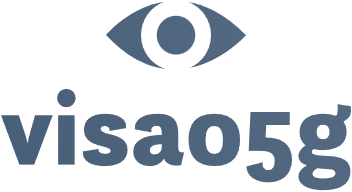Anúncios
Navigating the realm of credit cards and loans can be a complex endeavor; however, a thorough understanding of the intricacies involved can enable individuals to make informed financial decisions.
This guide delineates the various types of credit options available, along with their associated benefits and risks, as well as practical budgeting strategies for managing repayments.
It explores methods to maximize credit card rewards, effectively address debt, and consider alternative financing options.
Anúncios
Whether one is new to credit or seeking to enhance their financial acumen, this overview provides valuable insights for all. Engage with the material to take proactive steps toward securing a sound financial future.
Understanding Credit Cards and Loans
A comprehensive understanding of credit cards and loans is essential for effective personal finance management, as these financial products can significantly influence one’s credit score and overall financial health.
Whether an individual is contemplating the application for a credit card, seeking to secure a loan, or exploring available options, it is imperative to comprehend the different types of credit, their respective terms and conditions, and their implications for credit history. This knowledge not only facilitates knowledge-based decision making but also enhances financial literacy, enableing individuals to navigate their financial journeys with confidence.
Types of Credit and Loans
There exists a variety of credit and loan types, each tailored to address distinct financial needs and circumstances. Secured loans, which necessitate collateral, and unsecured loans, which do not, exemplify this diversity. Similarly, credit cards can be categorized into revolving credit, which offers flexibility in payment, and installment loans, characterized by fixed monthly payments. A thorough understanding of these distinctions is essential for making informed borrowing decisions.
By recognizing the requirements associated with each category, borrowers can more effectively align their financial strategies. For example, secured loans typically offer lower interest rates due to the reduced risk for lenders, but they require collateral, such as a home or vehicle. Conversely, unsecured loans, which are often easier to obtain, may carry higher interest rates because they represent a greater risk for lenders.
Moreover, revolving credit, such as credit cards, permits ongoing borrowing up to a specified limit, thereby facilitating cash flow management. In contrast, installment loans provide a straightforward repayment structure, which can enhance budgeting efficiency.
The choice between these options can significantly impact monthly expenses and long-term financial objectives.
Benefits and Risks of Using Credit
Utilizing credit judiciously can provide several advantages, including improved debt management, the opportunity to establish a credit history, and access to various rewards programs.
However, it is important to recognize the associated risks, such as the accumulation of high-interest rates, late fees, and the potential for financial strain if not managed properly.
A comprehensive understanding of both the benefits and drawbacks of credit usage is critical for attaining long-term financial wellness and ensuring responsible borrowing practices.
Pros and Cons of Credit and Loans
Credit and loans present distinct advantages and disadvantages that can significantly influence one’s financial health. On the positive side, responsible utilization of credit can enhance an individual’s credit score, provide access to emergency funds, and offer flexibility through various payment plans. However, the drawbacks include potential credit card fees, the obligation of minimum payments, and the risk of entering a cycle of debt if not managed appropriately.
Utilizing credit judiciously, such as paying off the balance in full each month to avoid interest charges, can result in rewards points or cash back, thereby reinforcing sound financial habits. In contrast, accumulating debt through impulsive purchases can lead to a detrimental cycle, where high-interest rates complicate recovery efforts. For example, an individual who employs a credit card for everyday purchases while consistently maintaining a paid-off balance can build a positive credit history.
Conversely, those who struggle to keep up with payments may find themselves ensnared by mounting debt, highlighting the dual nature of credit’s impact on one’s financial journey.
Creating a Budget for Credit and Loan Payments
Developing a budget for credit and loan payments is an essential component of maintaining financial health and achieving financial objectives. By utilizing effective budgeting techniques, individuals can monitor monthly expenses, allocate appropriate funds for loan repayments, and prepare for unforeseen expenses, all while ensuring a positive cash flow.
A well-structured budget not only facilitates adherence to financial goals but also promotes greater overall financial responsibility.
How to Budget for Credit and Loan Payments
Budgeting for credit and loan payments necessitates a strategic approach to financial planning that takes into account one’s income, expenses, and overall spending habits. By thoroughly analyzing cash flow and establishing a repayment strategy, individuals can effectively allocate funds to cover credit card payments, loans, and cash advances. This proactive methodology minimizes financial stress and enhances the capacity to meet obligations.
To initiate this process, one should first assess their total monthly income, which includes salaries, bonuses, and any additional sources of revenue. Subsequently, a comprehensive list of monthly expenses should be created, detailing fixed costs such as rent or mortgage, utilities, groceries, and discretionary spending. Following this, establishing spending limits for each category is essential to ensure that adequate funds are available to address outstanding debts.
As a practical example, utilizing budgeting tools such as applications or spreadsheets can facilitate the tracking of expenses against income. Prioritizing high-interest debts for early repayment can significantly mitigate financial burdens over time. Additionally, resources such as online calculators for debt repayment and financial literacy courses can provide valuable insights to enhance budgeting skills.
Maximizing Credit Card Rewards and Benefits
Maximizing credit card rewards and benefits requires a thorough understanding of the complexities of rewards programs, promotional offers, and the associated fees. By enhancing financial literacy and practicing responsible borrowing, individuals can effectively leverage these rewards to improve their financial outcomes.
Whether one seeks cashback, travel rewards, or points, acquiring the knowledge to optimize the use of credit cards can yield substantial advantages.
Tips for Getting the Most Out of Your Credit Card
To optimize the benefits of a credit card, it is imperative to align spending habits with the card’s offerings, taking into account factors such as the Annual Percentage Rate (APR), credit limits, and balance transfer options. By managing credit card usage strategically, individuals can maximize rewards programs and minimize interest charges, resulting in improved financial outcomes.
Commence by reviewing regular monthly expenses and identifying categories where the card provides the most rewards, such as groceries, travel, or dining.
A thorough understanding of the APR is essential, as it directly impacts the amount incurred when carrying a balance; therefore, monitoring the credit limit is crucial to avoid overspending and incurring unintended fees.
Consistently making timely payments is vital—not only to prevent late fees but also to establish a positive credit history, which can facilitate better terms on future loans and credit cards.
By implementing these strategies, consumers can cultivate a credit card approach that serves their financial interests effectively.
Managing Debt and Avoiding Financial Pitfalls
Effective debt management is crucial for preventing financial pitfalls and maintaining a healthy credit score. By implementing strategies such as credit counseling, debt consolidation, and formulating a comprehensive repayment plan, individuals can effectively address financial stress and work towards achieving financial wellness.
A thorough understanding of the complexities of debt is essential for long-term success.
Strategies for Paying Off Debt and Avoiding Financial Traps
Effectively paying off debt and avoiding financial pitfalls necessitates a thorough understanding of one’s debt-to-income ratio, payment history, and the principles of responsible borrowing. By emphasizing these components, individuals can develop a sustainable strategy that prioritizes debt repayment while ensuring financial responsibility.
For example, the snowball method advocates for paying off the smallest debts first to build momentum, whereas the avalanche method focuses on addressing high-interest debts to achieve long-term savings on interest payments. Both strategies can foster a sense of accomplishment, promoting consistency in payment habits.
Maintaining a strong payment history is essential, as it has a significant impact on credit scores and overall financial well-being. Furthermore, adopting responsible borrowing practices—such as only accepting loans that can be repaid comfortably—contributes to long-term financial stability and minimizes the risk of entering a cycle of debt.
Alternative Financing Options
Alternative financing options provide effective solutions for individuals seeking financial assistance outside of traditional credit and loan frameworks. These options may encompass short-term loans, long-term loans, and personal loans, each tailored to address specific financial needs based on individual circumstances.
Comprehending these alternatives is particularly important during economic downturns when access to conventional financing may be restricted.
Exploring Alternatives to Traditional Credit and Loans
Exploring alternatives to traditional credit and loans can significantly enhance financial wellness and provide more flexible borrowing options. Peer-to-peer lending, grant funding, and income generated from side ventures are several alternatives that may supplement or even replace conventional lending sources.
These non-traditional financial avenues not only address a variety of financial needs but also enable individuals to take greater control over their financial journeys. For instance, peer-to-peer lending facilitates direct connections between borrowers and investors, often resulting in reduced interest rates and less stringent qualification criteria. Conversely, grant funding represents an excellent opportunity for those seeking to initiate new projects or ventures without the burden of repayment.
Additionally, astute individuals can leverage the gig economy to generate supplemental income, thereby increasing their capacity for personal expenditures and savings. A comprehensive understanding of these options equips individuals with the necessary tools to effectively tailor their financial strategies.
Frequently Asked Questions
1. What is the best way to use credit cards without breaking my budget?
The best way to use credit cards without breaking your budget is to create a budget plan and stick to it. Make sure to only use your credit card for necessary expenses and pay off the balance in full each month to avoid accumulating debt and interest charges.
2. How can I find the right loan for my financial situation?
To find the right loan for your financial situation, research different lenders and compare their interest rates, terms, and fees. Make sure to also consider your credit score and income before deciding on a loan.
3. What are the benefits of financing a large purchase instead of paying in full?
Financing a large purchase can allow you to make smaller, more manageable payments over time instead of paying a large sum upfront. It can also help you build credit if you make payments on time.
4. How can I avoid overspending on my credit card?
To avoid overspending on your credit card, set a low credit limit and regularly track your spending. You can also leave your credit card at home when you go out and only use it for planned expenses.
5. Is it better to have multiple credit cards or just one?
It depends on your financial habits and self-control. For some people, having multiple credit cards can lead to overspending and debt. However, if you can manage them responsibly, having multiple credit cards can help you build credit and take advantage of different rewards and benefits.
6. How can I use financing to improve my credit score?
You can use financing to improve your credit score by making timely payments and keeping your credit utilization low. This shows lenders that you are responsible with credit and can help increase your credit score over time.






